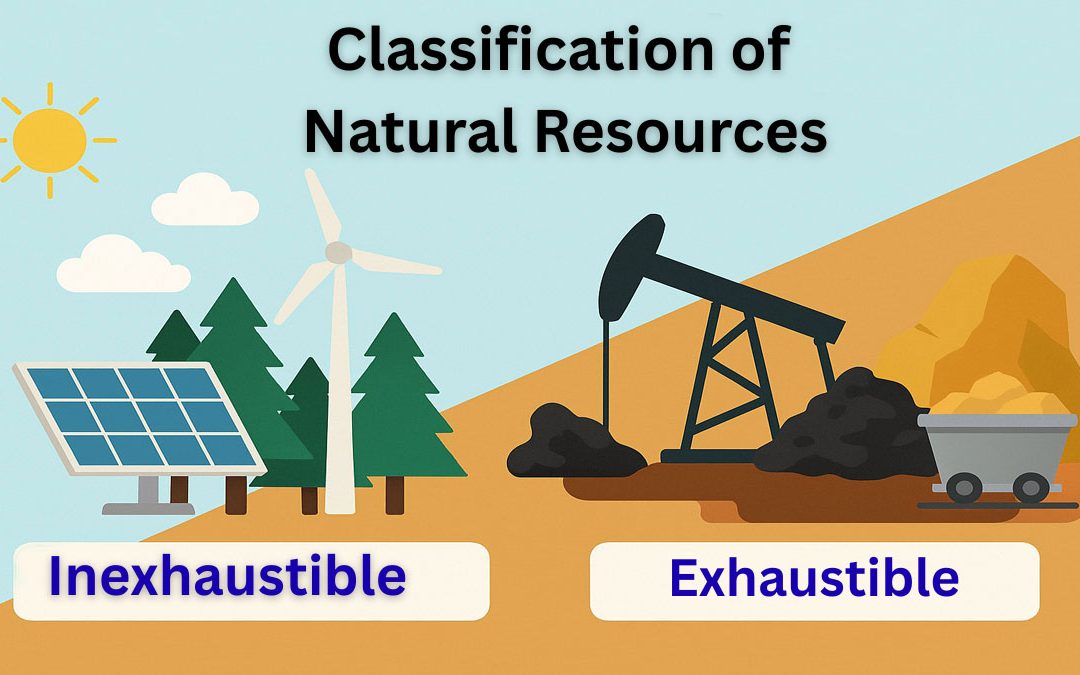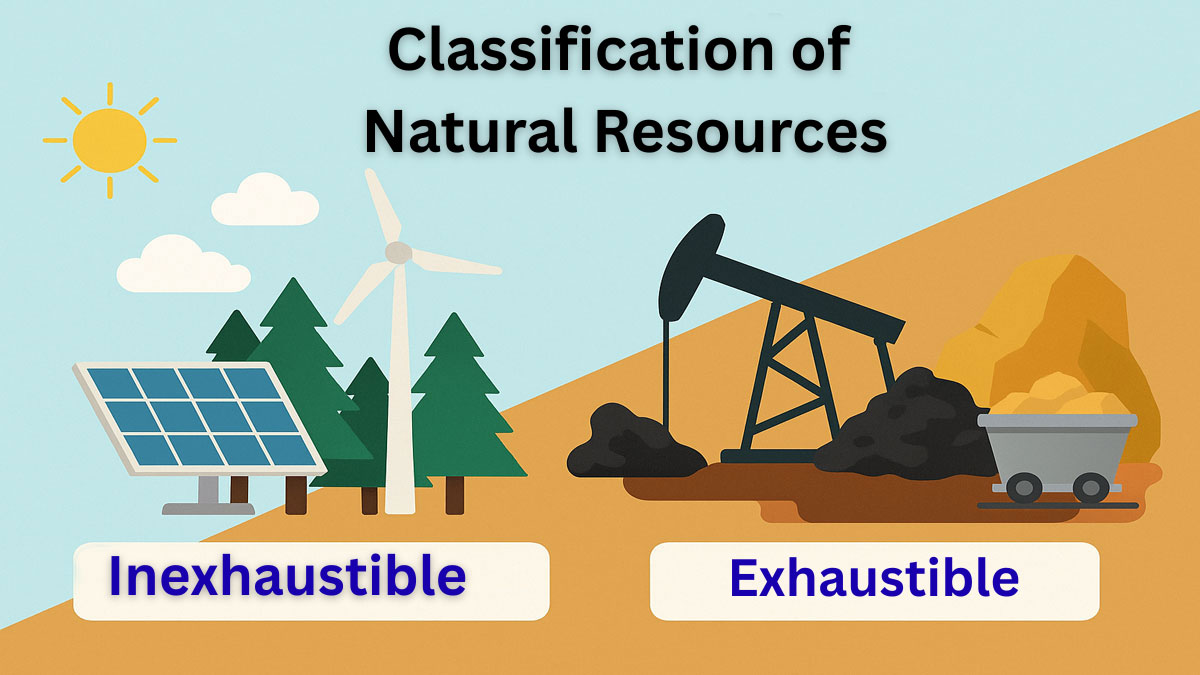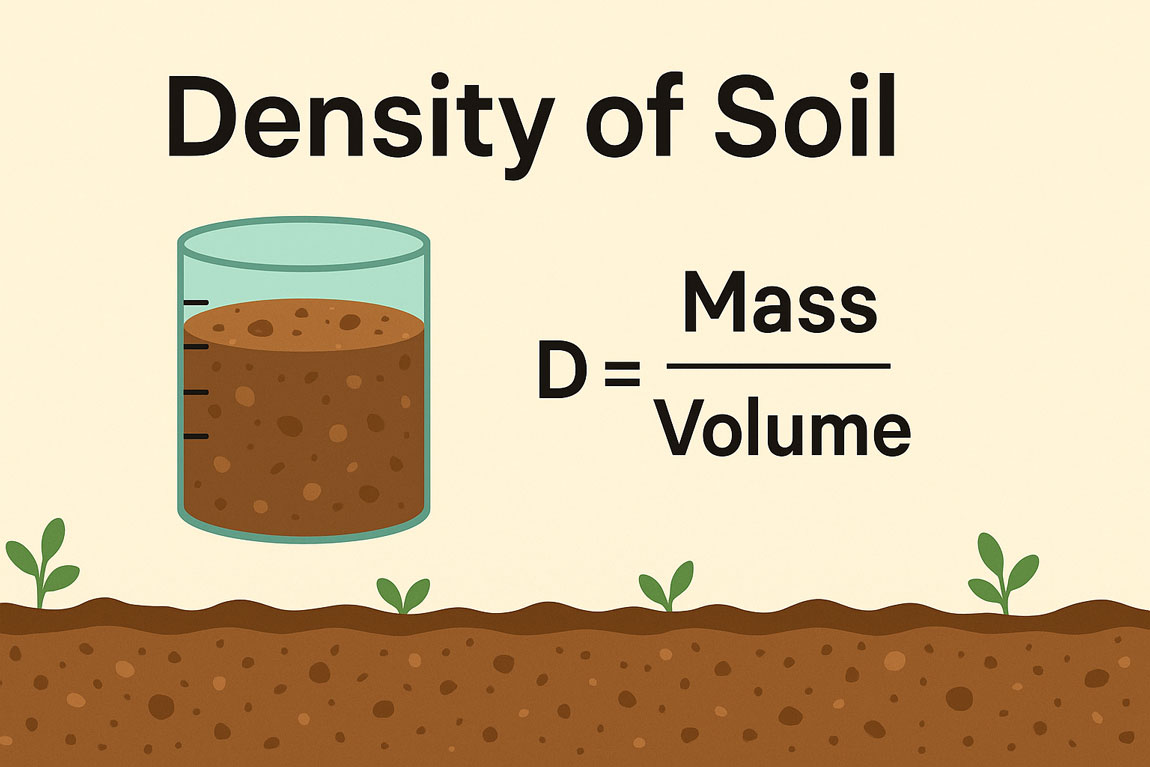The classification of natural resources is essential because natural resources vary greatly in their location, quantity, and quality. For instance, a particular forest type may occur only in certain countries. Also, the geographical area covered by the forest and the wood quality may differ widely in different countries. Some resources can be reused after being used once. A convenient classification of resources is based upon their exhaustibility and renewability.
Classification of Natural Resources:
Natural Resources can be categorized as
• Inexhaustible and
• Exhaustible.
Inexhaustible Resources:
Inexhaustible resources are available in unlimited quantities on the Earth. While some inexhaustible resources remain virtually unaffected by human impact, many others may show some changes in their quality, though their quantity may remain unchanged.
Resources like solar energy, wind power, tidal power, rainfall, and even atomic energy cannot be exhausted significantly at the global level due to human activities. Such resources may sometimes be locally affected by human activities; for example, pollution may change the quality of the air.
Exhaustible Resources:
A large number of natural resources are exhaustible, i.e. they have finite supply on the earth and can be exhausted if used indiscriminately. Broadly, the exhaustible resources can be either renewable or non-renewable.
Renewable Resources:
Most biotic resources are renewable. The growth and reproduction of such resources can be successfully managed so that these resources are continuously regenerated. However, if the consumption of these resources continues to exceed their rate of renewal, not only does their quality become affected, but they may even be totally exhausted. Selected examples of ecosystems and their important renewable products are:
- Forests, which yield timber and other plant products,
- Rangelands, which sustain grazing animals for milk, meat, and wool production,
- Wildlife, which maintains the food chain,
- Agricultural systems, which yield food and fibre, and
- Marine and freshwater systems, which yield various foods from plants and animals. Soil and water are other renewable resources.
Non-Renewable Resources:
Some biotic resources are non-renewable, i.e., they cannot be regenerated or reconstructed once they are used up. Biological species, which have evolved in nature during the course of millions of years, are considered non-renewable. Once a biological species becomes extinct on Earth, it cannot be recreated by man. Many abiotic resources are also non-renewable.
For instance, fossil fuels (coal, petroleum, and gas) and metals once extracted cannot be regenerated at the place of extraction. After unlimited extraction and use, the fossil fuels will certainly be exhausted.
Conclusion:
The classification of natural resources helps us understand their availability, usage, and sustainability. Inexhaustible resources like solar and wind energy are abundant and less affected by human use, while renewable resources such as forests and water can be replenished if managed responsibly.
However, non-renewable resources like fossil fuels and certain biological species are limited and cannot be regenerated once depleted. By understanding these classifications, we can make more informed decisions about resource conservation and promote sustainable development for future generations.






